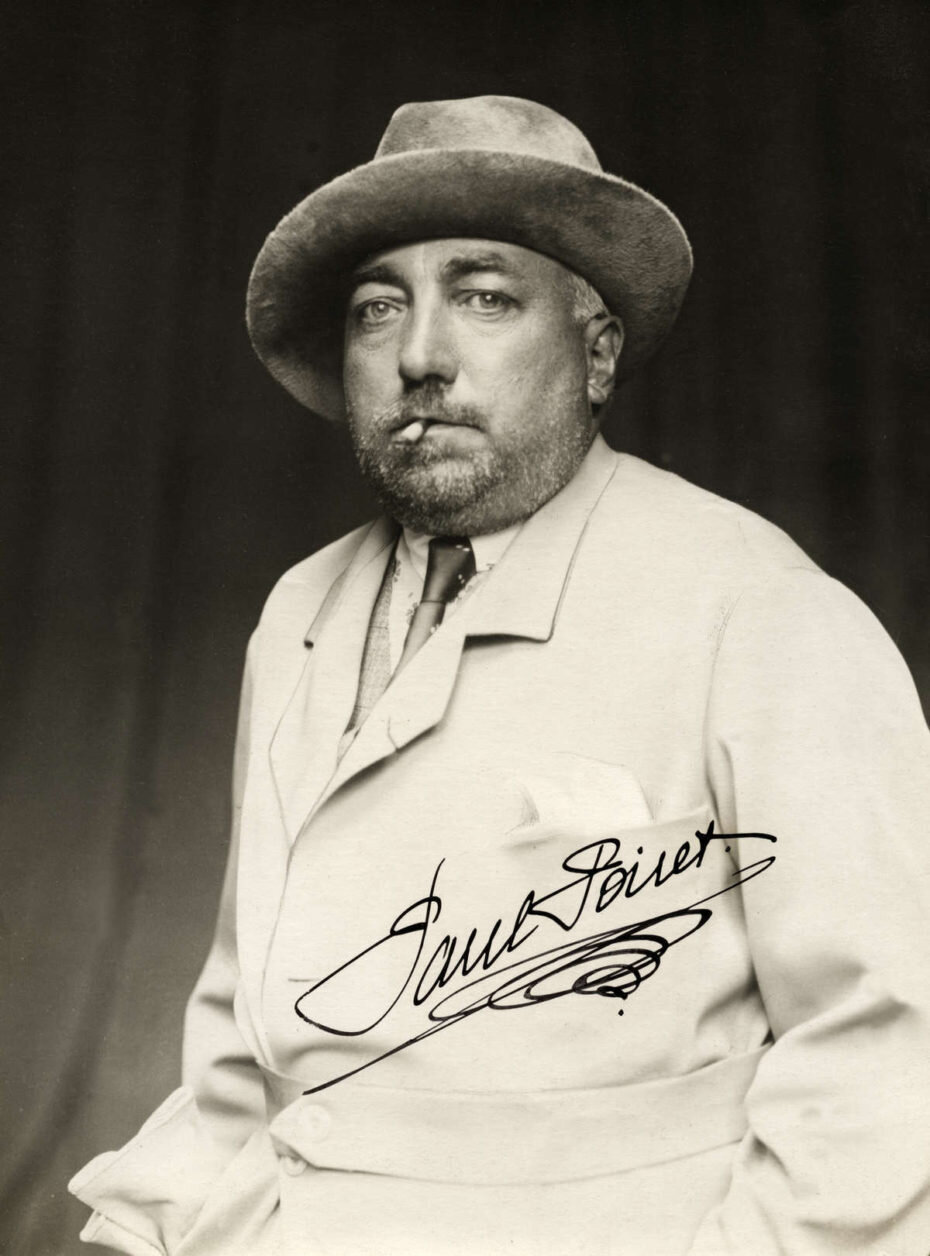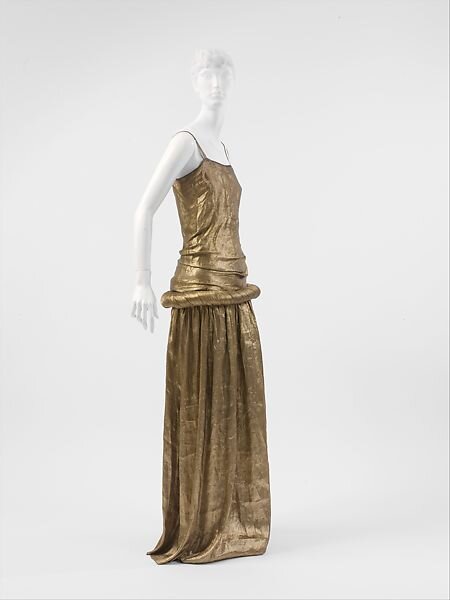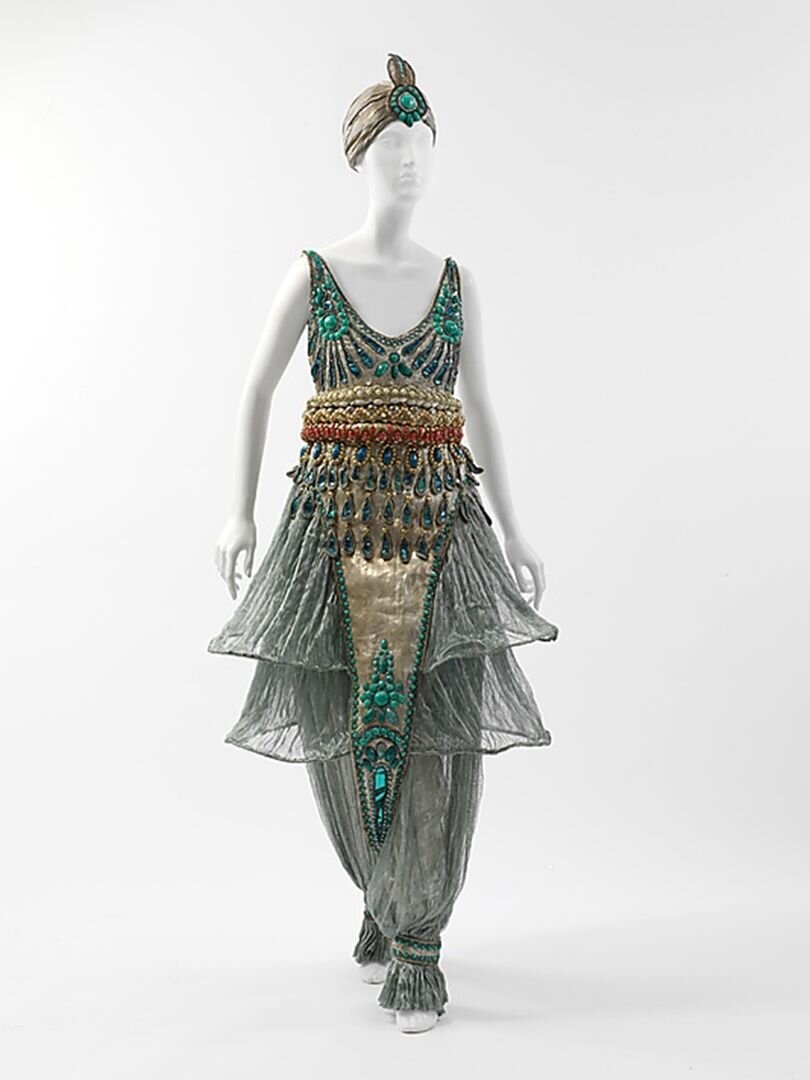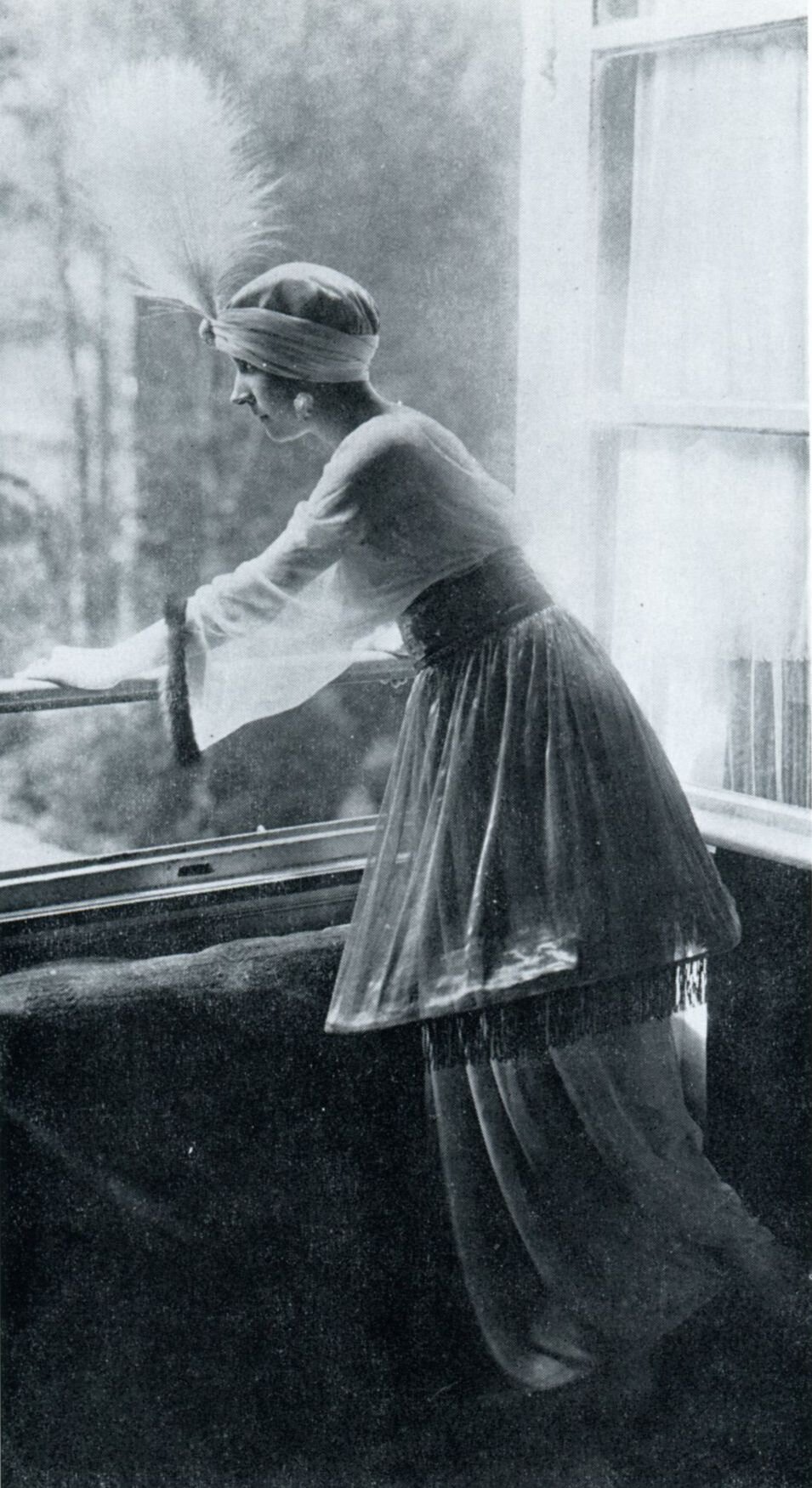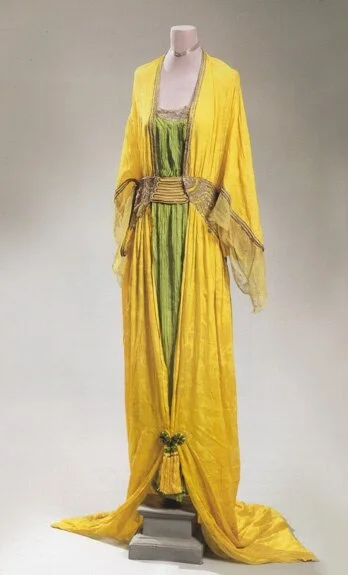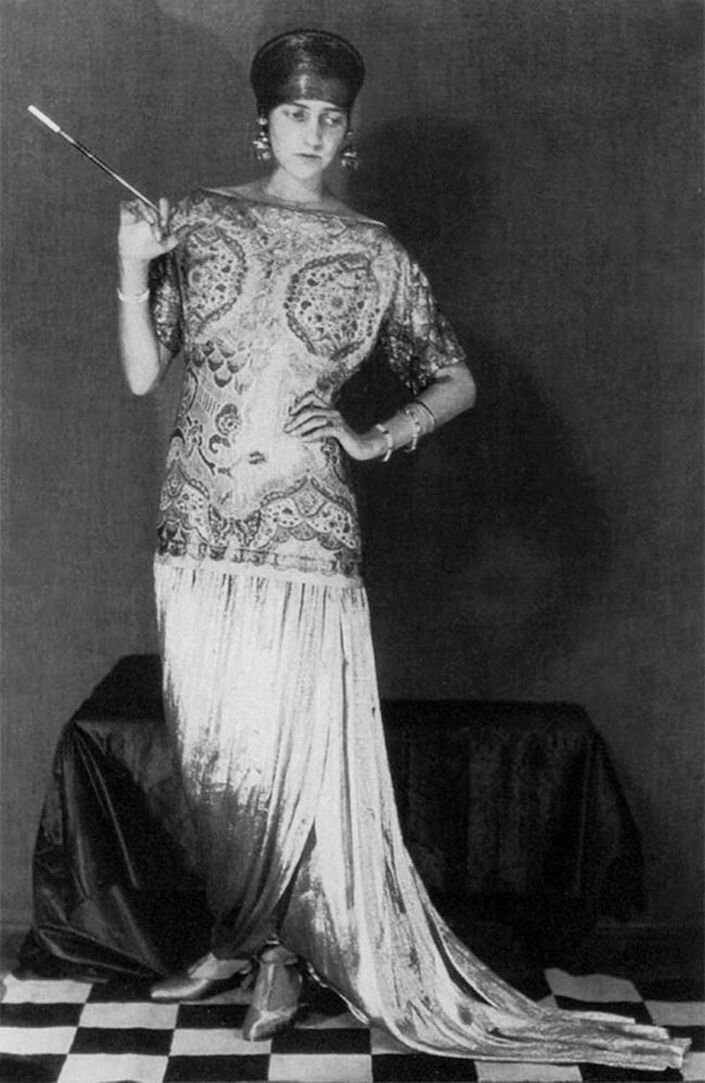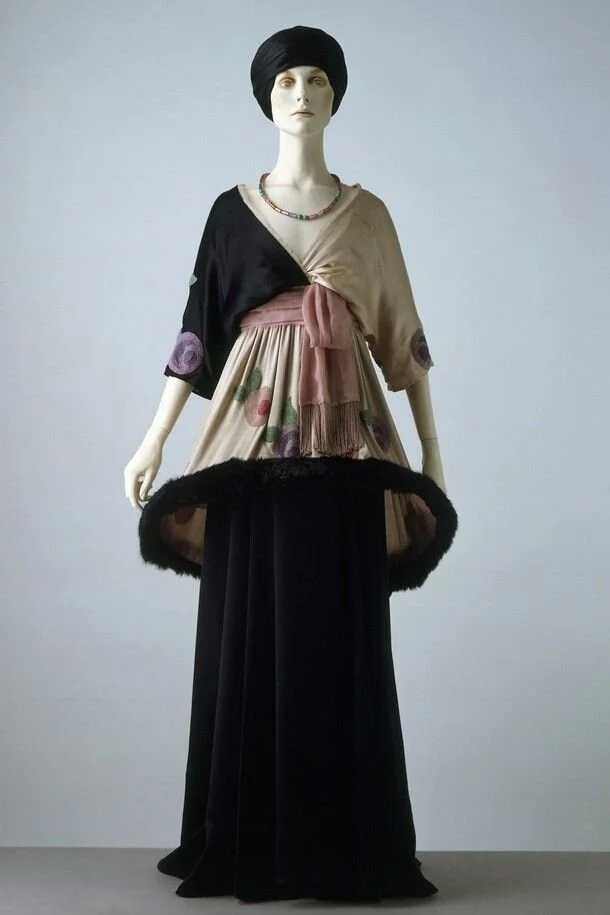Paul Poiret
More than any other designer of the twentieth century it was, arguably, Paul Poiret (1879–1944) who elevated fashion to the status of an artform. The Frenchman established his own house in 1903 and set about completely re-imagining the vision of the modern woman. Moving away from the structured constrictions of previous design, he firstly dismissed the petticoat, then later the corset in place of the brassiere. His designs were dreamed into being by draping fabric directly on the body, rather than tailoring and pattern making, and his mission was to alter the rigid silhouette to make his muse slim, youthful, agile and empowered.
As well as the grace and comfort of his designs, his main focus was artistic self-expression. Women could stand out from the crowd, look well travelled and exotic. It was all about the art of scene-setting through fashion and he often used well known artists to create bespoke designs for his fabrics. Clothes told a story for the first time, they didn’t just conform to the pre-dictated norms of convention. Often described as Orientalist, his creations drew inspiration from various Eastern styles, as well as antique and obscure regional styles. His key pieces being the kimono coat, the hobble skirt, and harem pants
Sadly Poiret is one of the names that slipped through the cracks of fashion history, as he all but faded into obscurity during later life. When he returned from serving in First World War in 1919, the business was on the brink of bankruptcy. Chanel were producing simple, sleek clothes that relied on excellent workmanship. Poiret’s elaborate artforms couldn’t keep up. By his own admission he aimed only for his dresses to "read beautifully from afar." Customers couldn’t rely on the durability of their quality and so Poiret’s work became increasingly unpopular. The once great toast of the Paris fashion scene fell into terrible debt and ended up doing menial odd jobs and relying on old friends for food and lodging., When he died in 1944, his genius had been forgotten. His friend Elsa Schiparelli prevented his name from encountering complete oblivion, and it was Schiaparelli who paid for his burial

